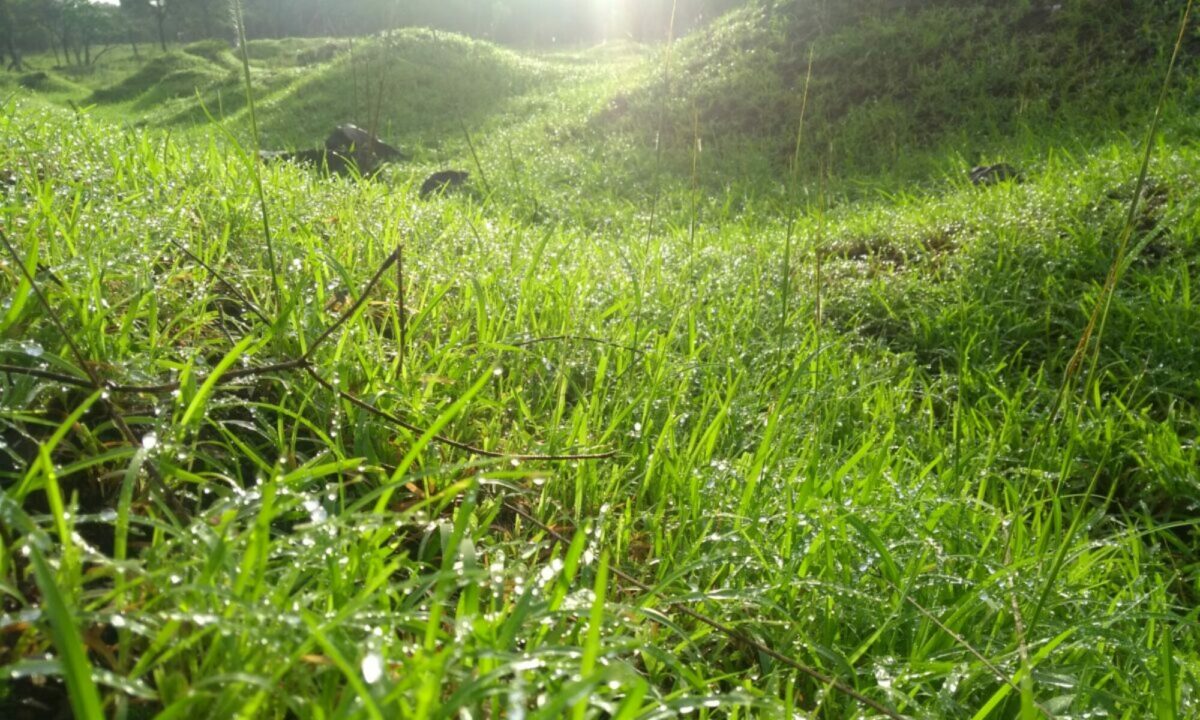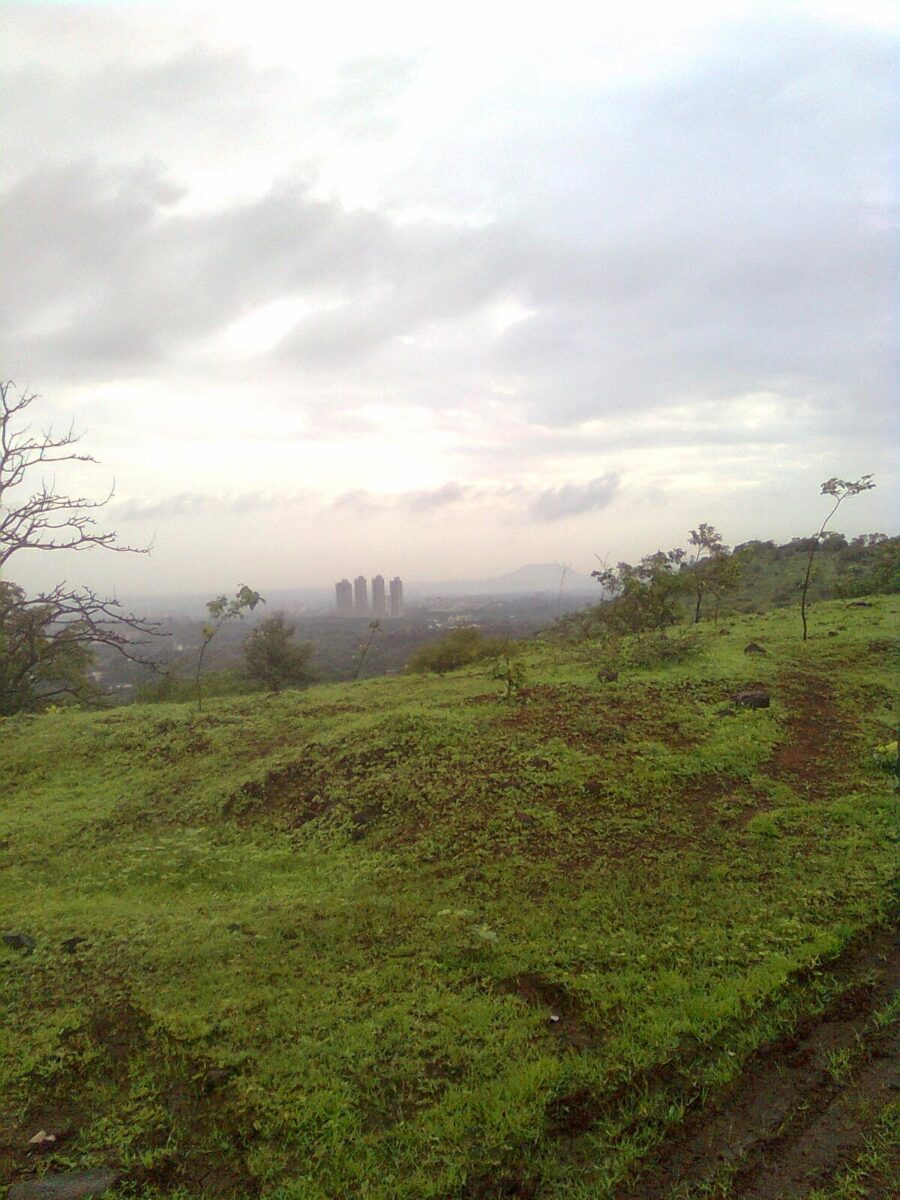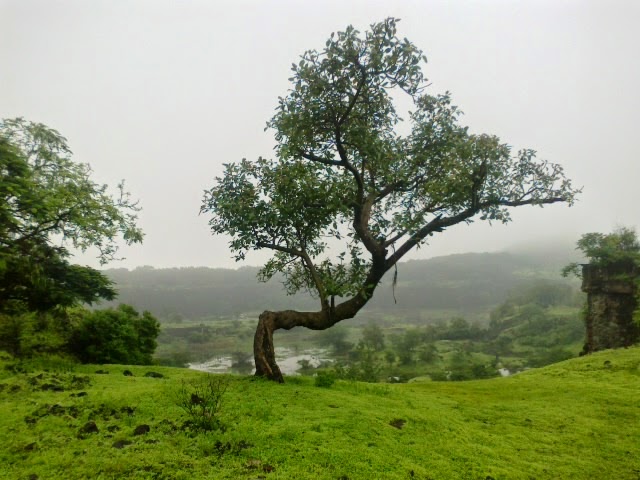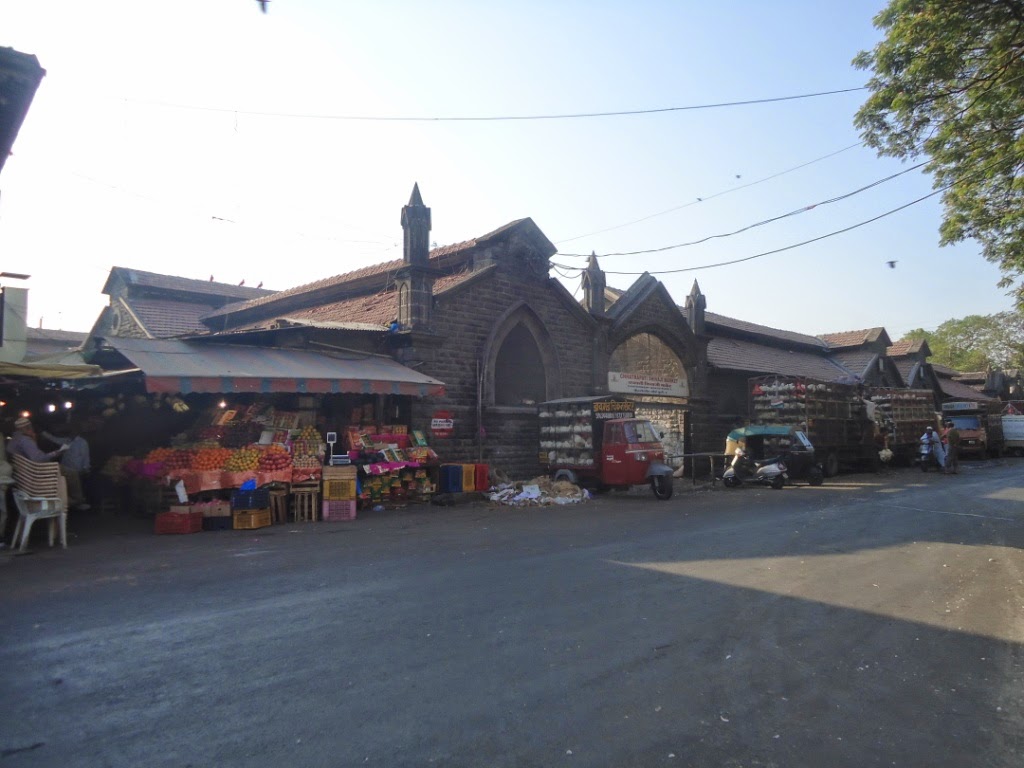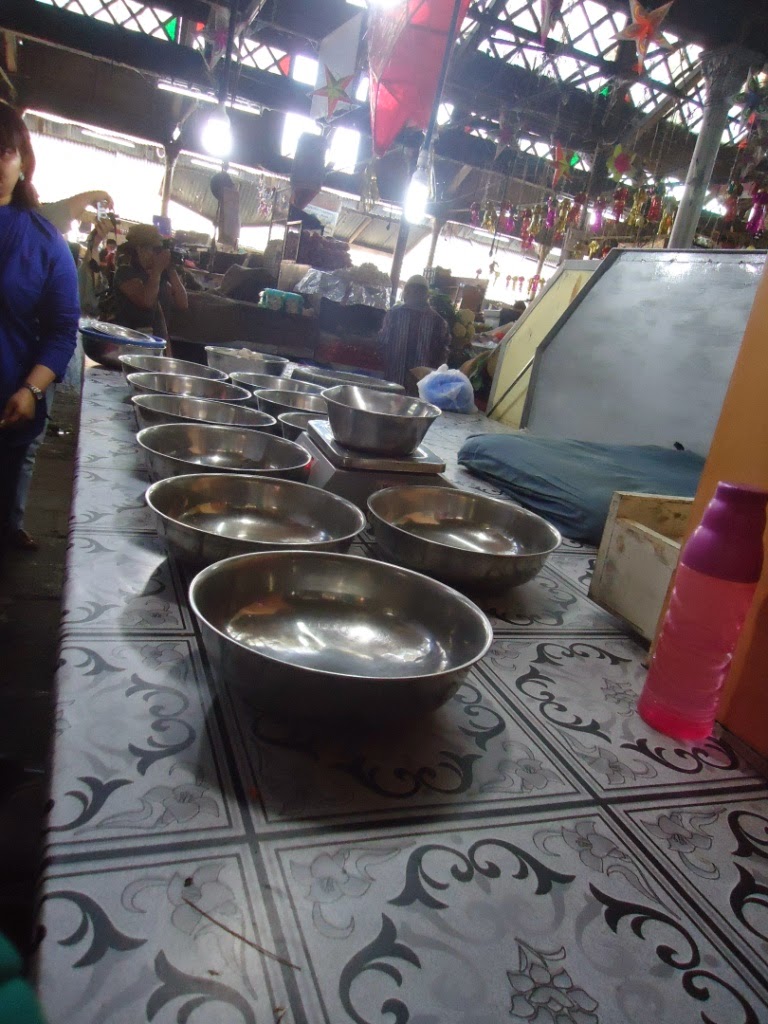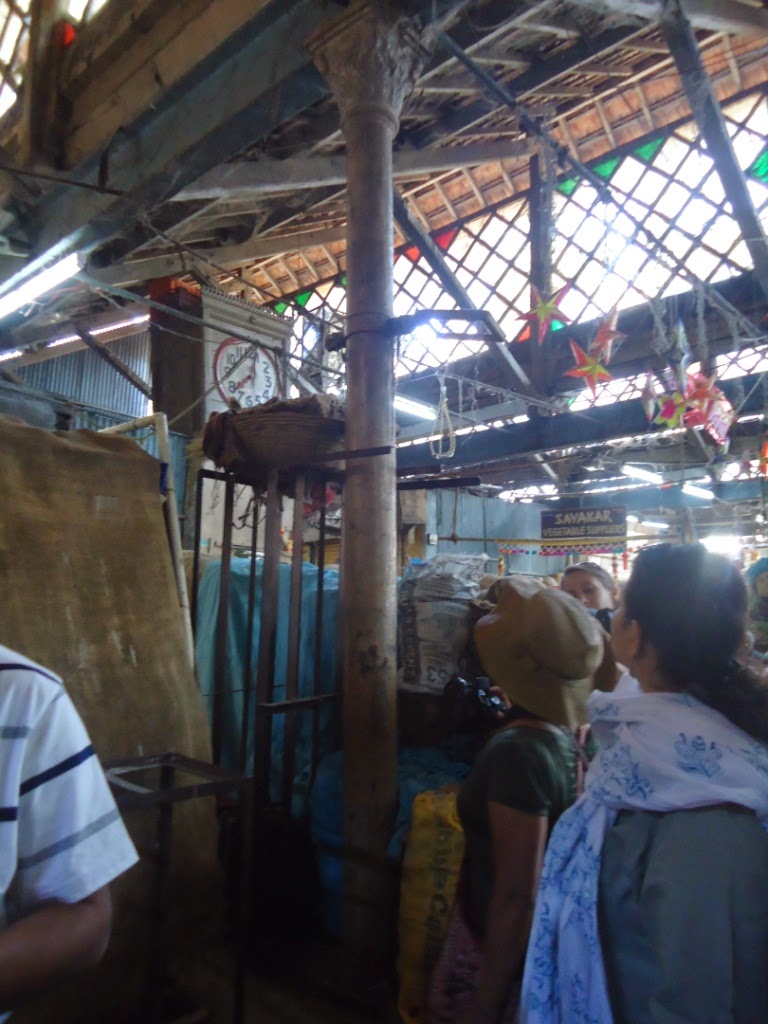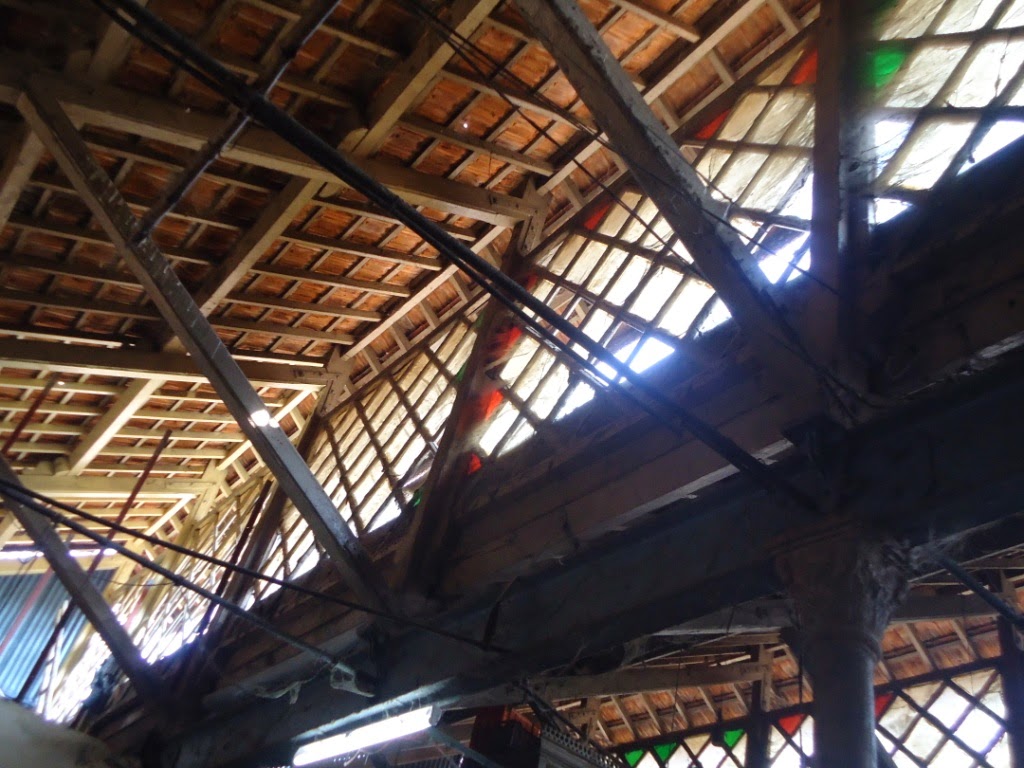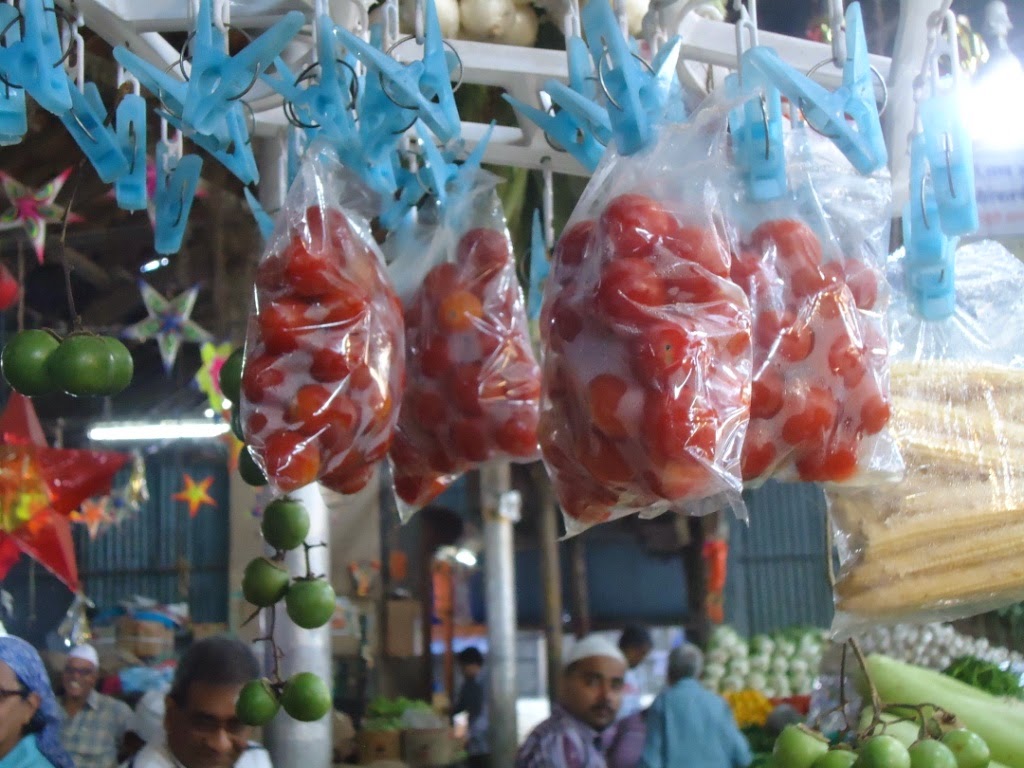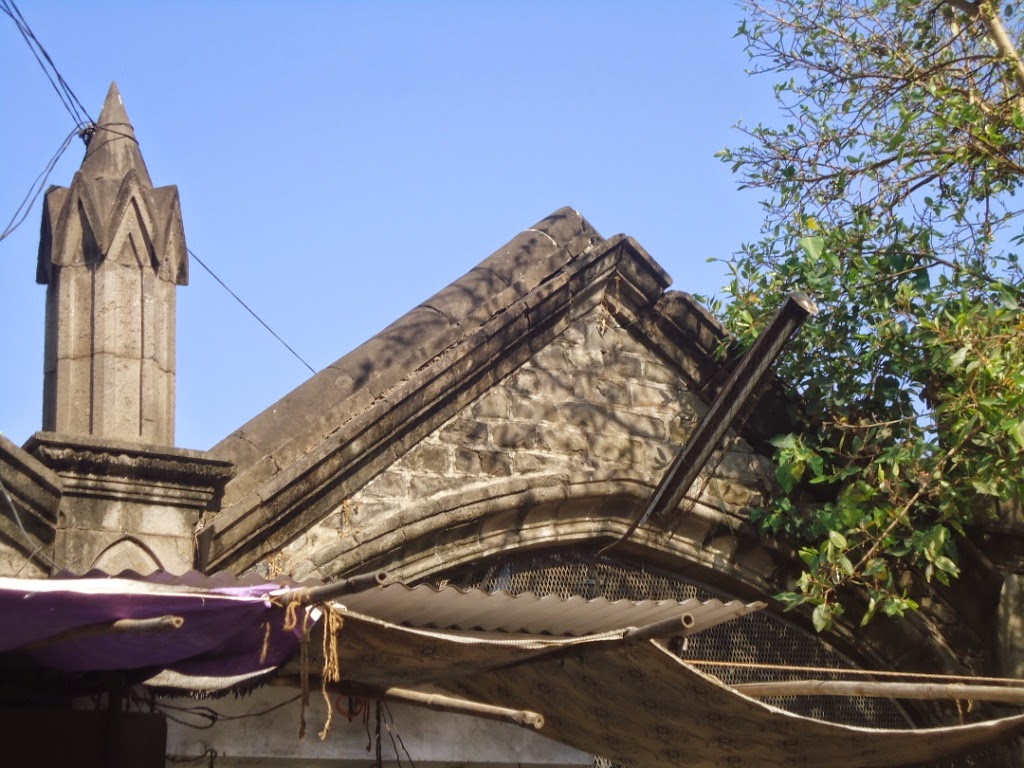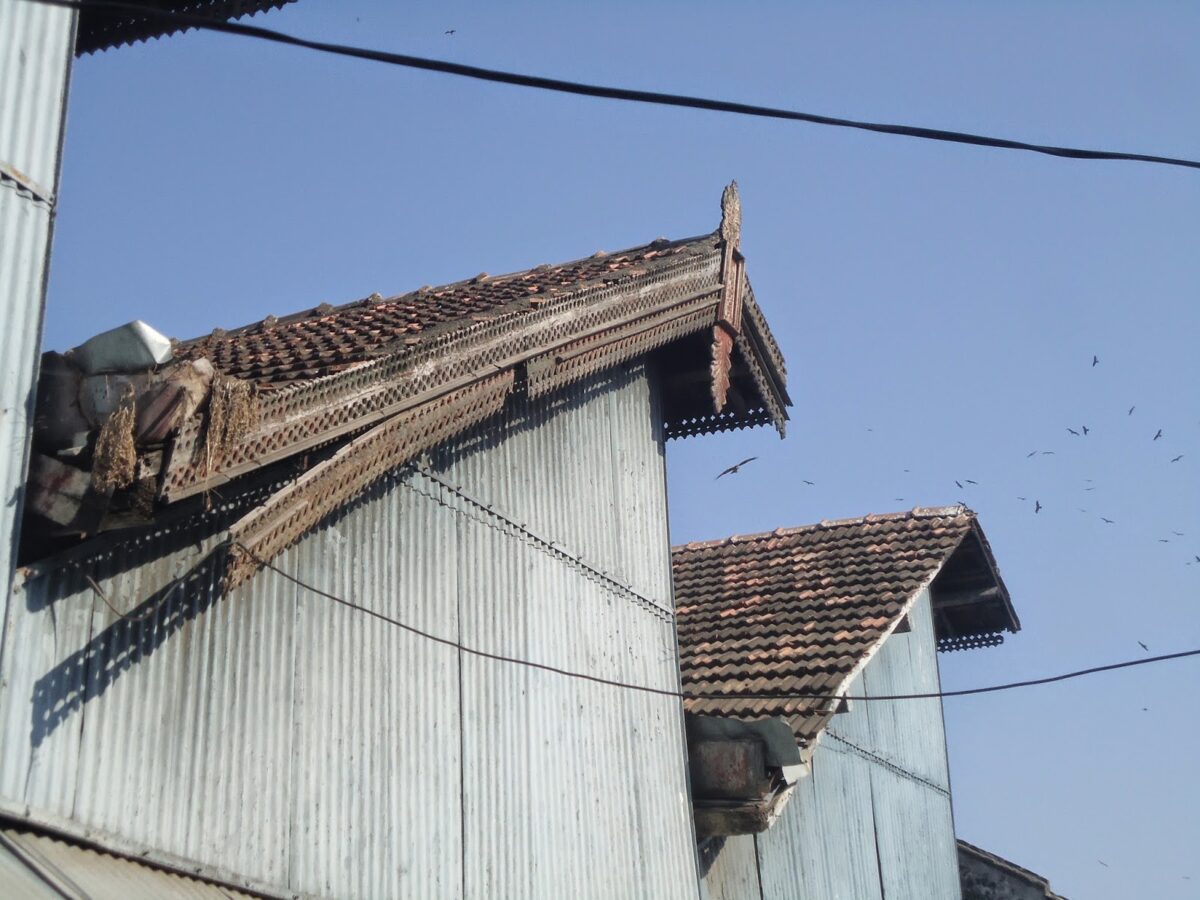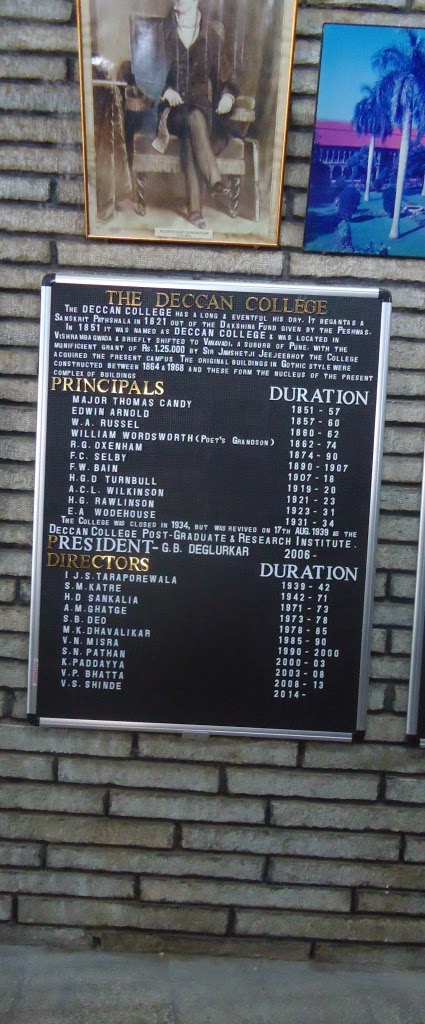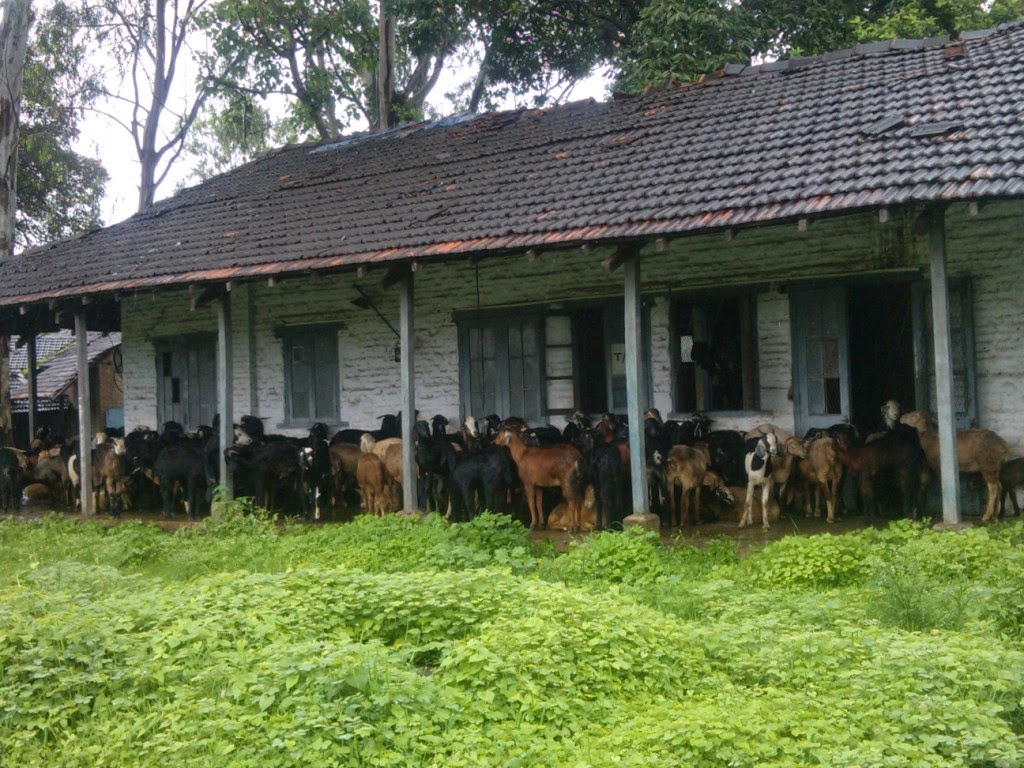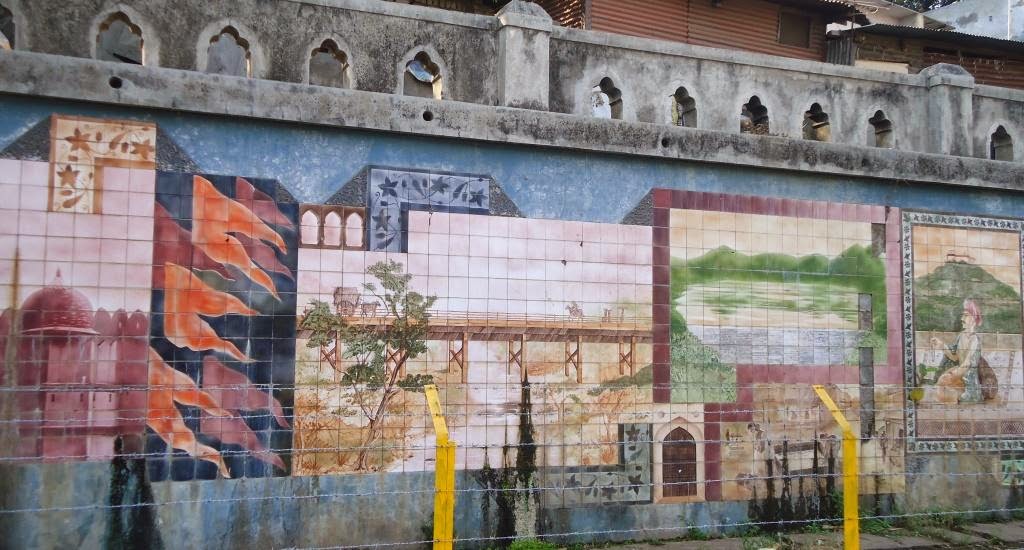 |
| A mural of the Lakdi pul in Pune as it used to be… |
The Hills Are Alive
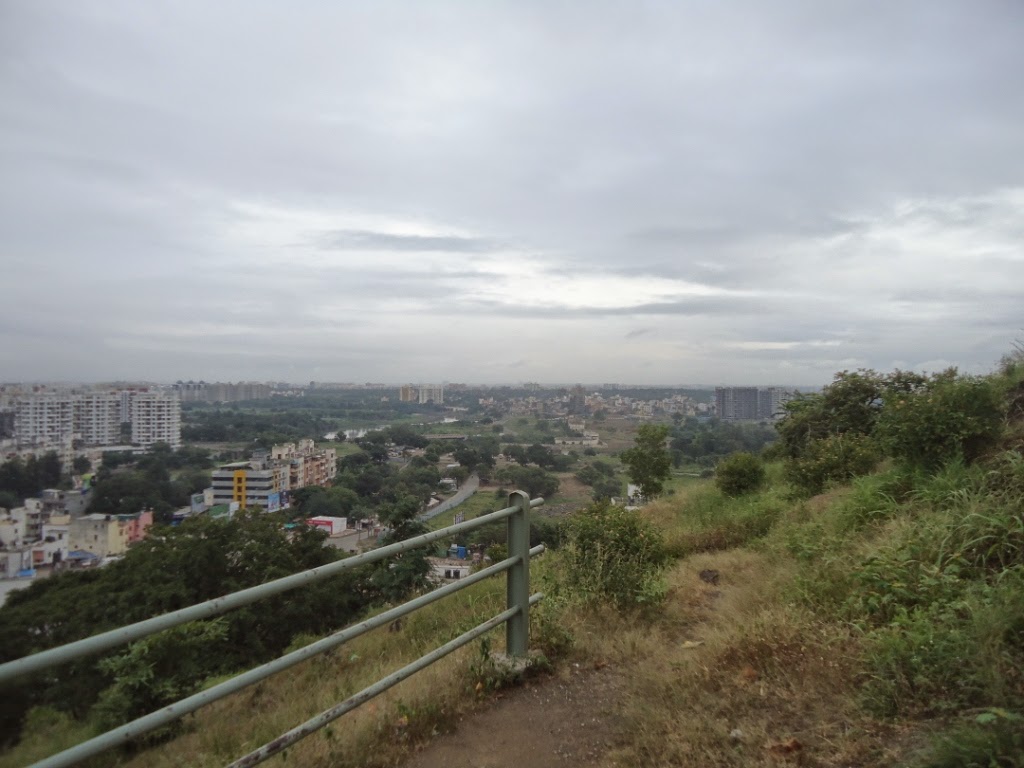 |
| The hill overlooks Baner and Pashan and one can see the city skyline stretching as far as the eye can see |
Any one who has been to these tekdis (hills) will totally agree with me. I had not visited the Baner Tukai tekdi and eagerly took up an opportunity to visit it.
Like most tekdis in Pune, this one too suffered from deforestation and must have been really bare. It has been the ceaseless and untiring efforts of Dr Garudkar and the Clean Earth Movement that is showing its fruits now. Here is a link to their website.The group has been active since 2006.
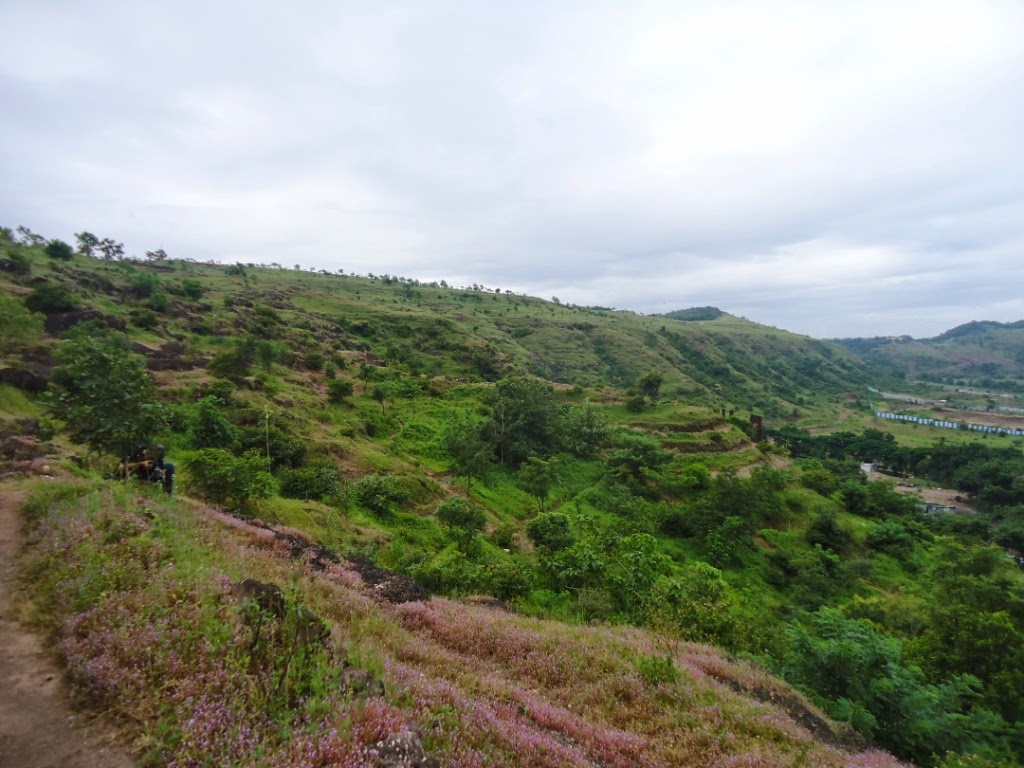 |
| The almost flat top is perfect for long walks |
The Baneshwar caves are located at the foot of the hill. As one ascends the steps one is immediately struck by the extent of the city’s growth, the spread of concrete jungle almost into the hills. Yet, look up and one can see the green flat top of the tekdi as it meanders away into the distance. Get off the steps and follow the foot trails to enjoy the greenery. The tekdi spans a vast area hence has been ‘divided’ into different sectors named after forests of Maharashtra. The naming is purely for the sake of convenience of the activists working there.
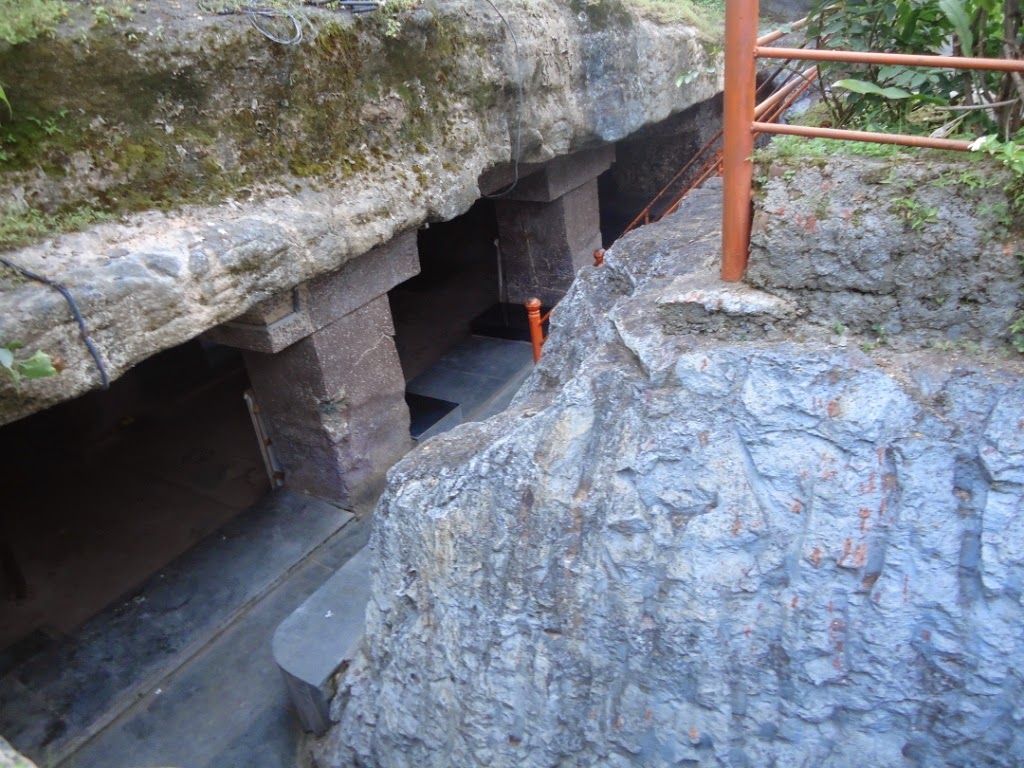 |
| These caves are located at the foot of the hill and have a Shiva temple |
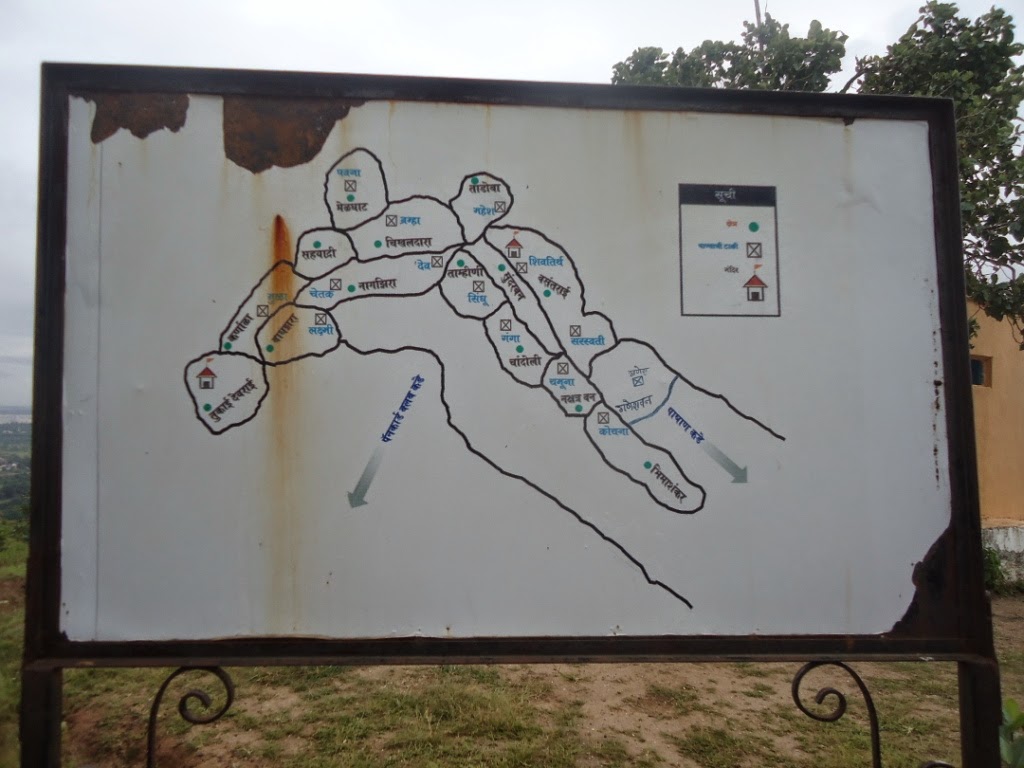 |
| The ‘map’ of the hill area |
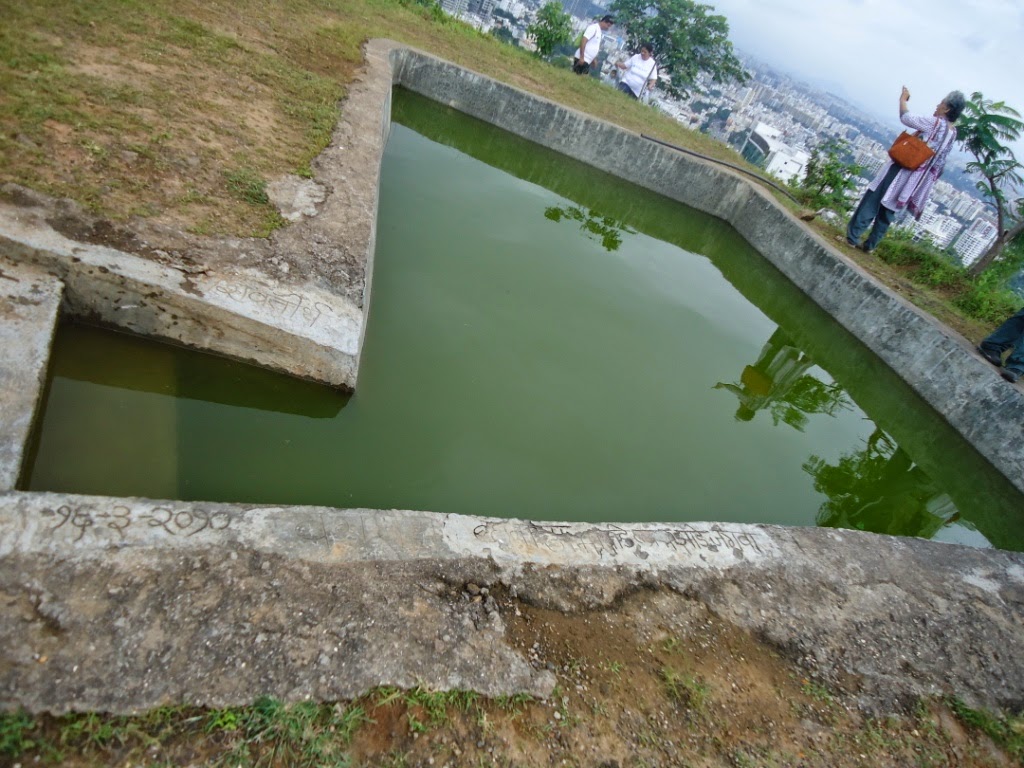 |
| The activists have built such tanks to store water for the trees. |
Here
are some highlights of the Baner Tukai tekdi. If you happen to live in
the area, do join the group and help nurture the trees, and keep the
‘lungs’ of the city healthy and green!
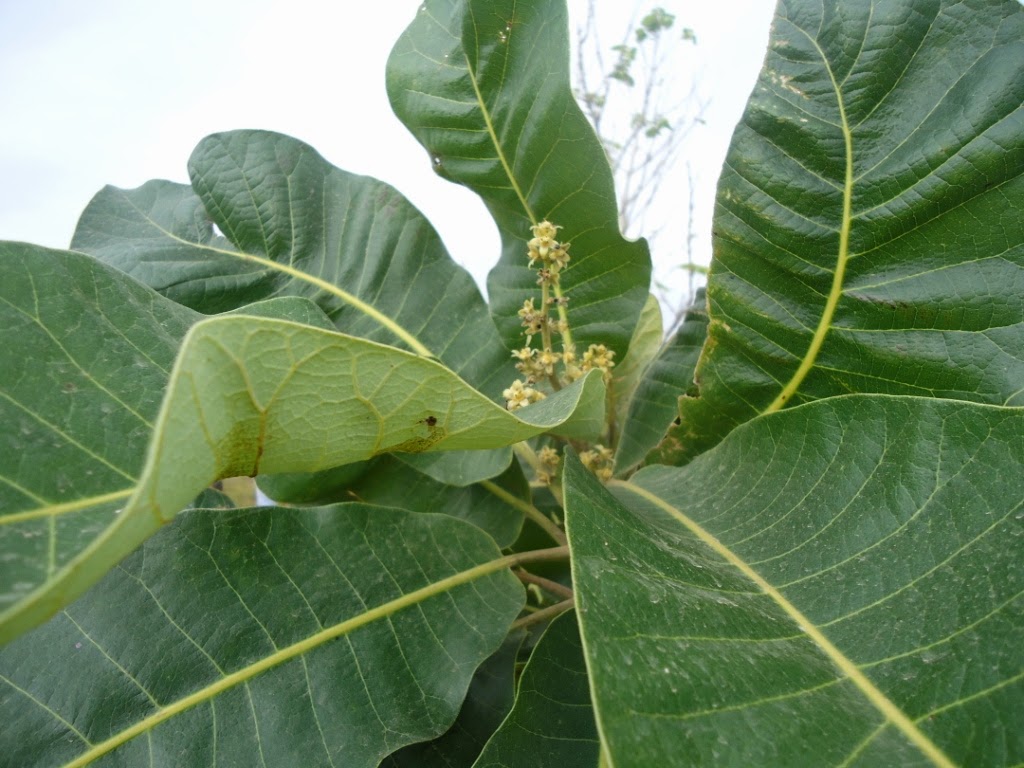 |
| This Bibba tree was flowering (Semecarpus anacardium) |
 |
| Sagargota (Caesalpinia bonduc) inflorescence- the tree is armed with thorns on all parts |
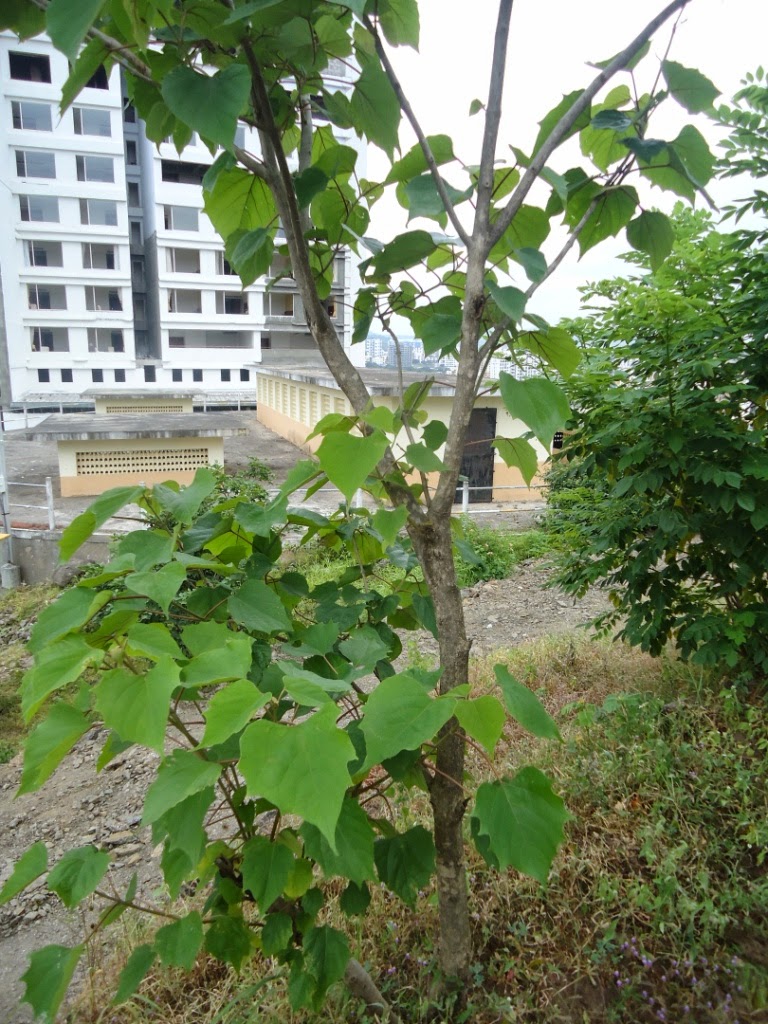 |
| Shivan (Gmelina arborea) was seen growing at many sites. |
Besides these, many other tree species had been planted and seemed to be pretty healthy. Some which I identified were several Ficus species, Neem, Arjun, Laxmi Taru (Simarouba glauca), varieties of Bauhinia, Prajakta, Awala, Waval.
The flowers that grabbed all our attention despite their small size (and by small I mean half a finger nail) were the seasonal herbs. They were in full bloom and created yellow and purple carpets on the hill side, almost reminiscent of the Kas Pathar. We saw Hyptis suaveolens (with Tulsi-like-fragrant leaves), Sida species, Trichodesma sp, Sopubia sp, Alysicarpus sp, Stryka sp, Sonchus sp and many many more that we could not identify. There were some lichens too!
 |
| Yellow Tribulus terrestris |
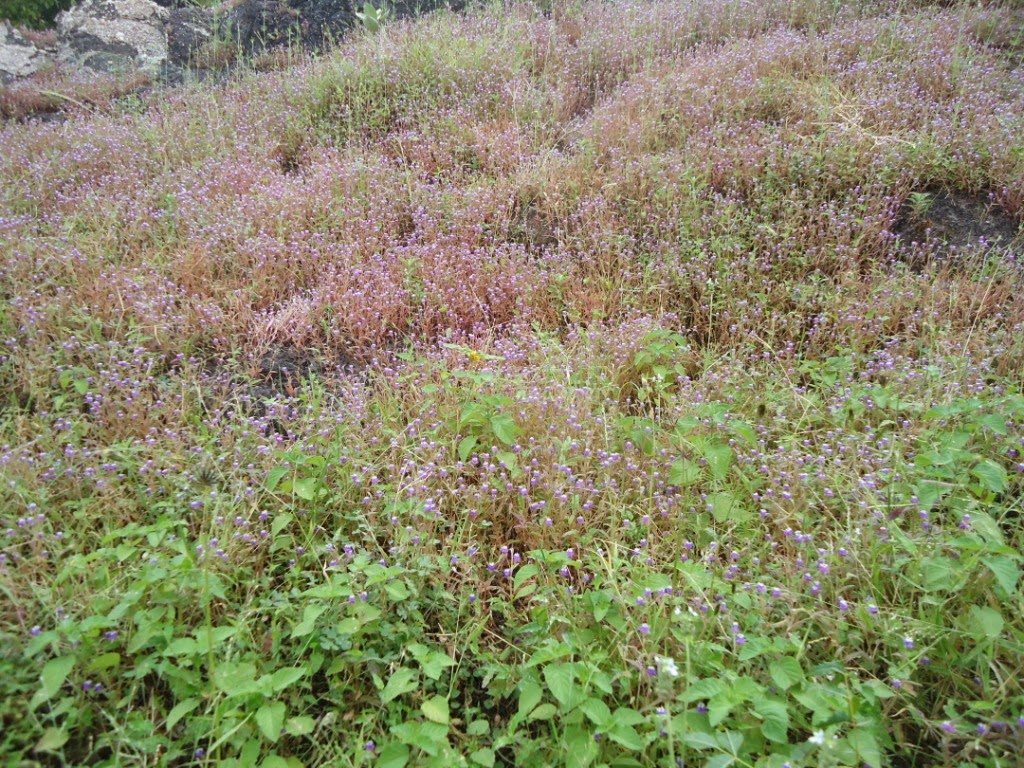 |
| A purple-pink carpet of Cyanotis species |
The hills in Pune are at their full glory right now. Go enjoy!
What do the figures indicate?
An annual debate before Ganeshutsav has almost become a ritual as environment activists and local authorities urge people to immerse their Ganesh idols in specially built ‘houd’ and not in the river. Traditionally, the idol is supposed to be made out of ‘Shadu’ a kind of river mud which means the idols dissolves easily in water once immersed. There are umpteen workshops to help people make their own idol which can be easily immersed at home.
Yet many idols continue to be made with Plaster of Paris. These often do not dissolve in water and the idol that we have worshiped for 10 days suddenly becomes a ‘problem’. Here is a stark article in The Alternative about fate of Ganesha idols.
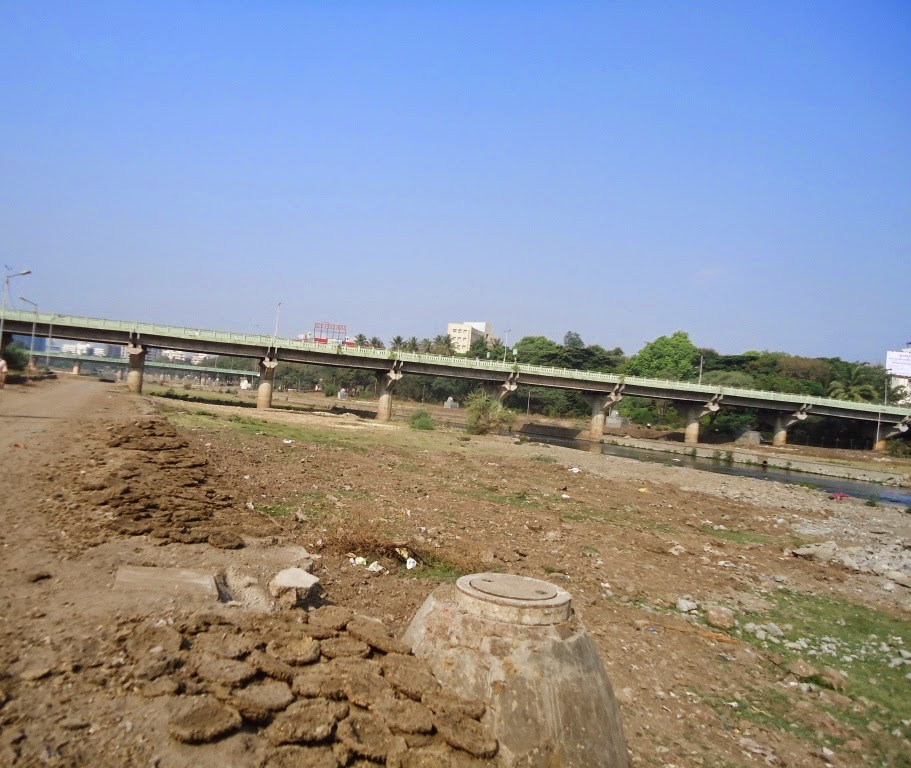 |
| The river becomes almost a trickle as water and is often highly polluted |
This year we reached the river early to immerse our idol. I was pleasantly surprised to find the entire area absolutely clean. I could see the bottom of the ‘houd’ and I was very happy to immerse our idol in its clean water.
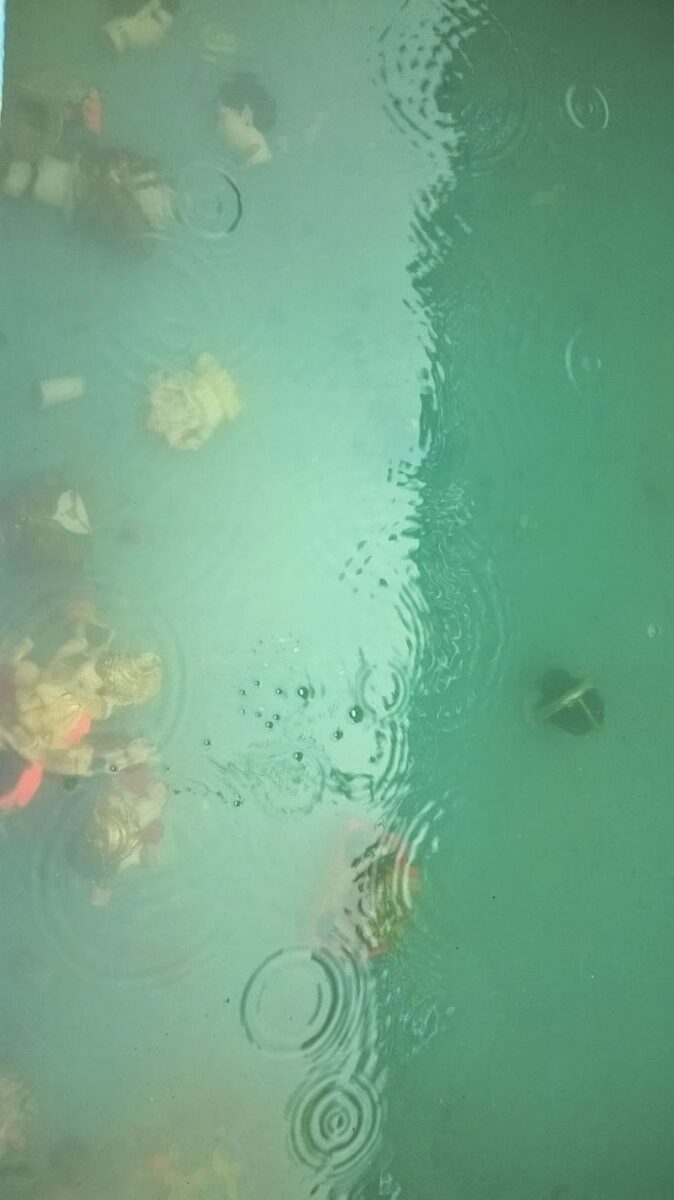 |
| It was possible to see the bottom of the ‘houd’ |
Yet an article in Maharashtra Times dated 10 Sep 2014 was very disheartening. It has published data which indicates that the number of idols immersed in the river in the Sep 2014 Ganeshutsav has actually increased y/y and the number of idols immersed in the ‘houd’ has reduced y/y. The article does not mention number of idols immersed at home nor the total number of idols in the city.
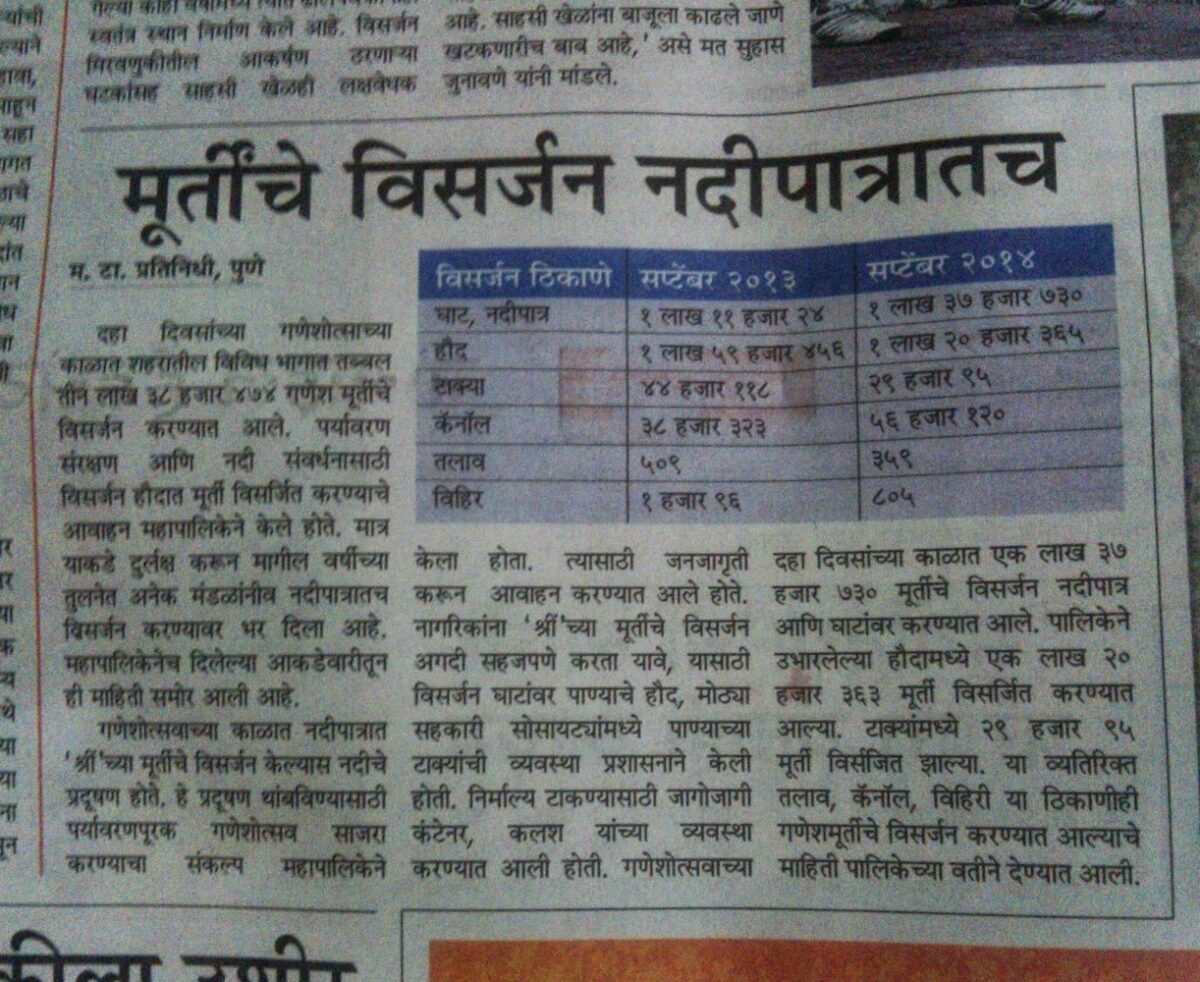
However if one considers only the figures available in the article then there seems to be shift towards immersing the Ganesha idol in the river, tanks, lakes and wells.
Above figures for Sep 2014 repeated below with y/y figures in brackets. The figures in red are higher y/y:
Ghat, Nadipatra: 1 lakh 37 thousand 730 (1 lakh 11 thousand 24)
Houd: 1 lakh 59 thousand 456 (1 lakh 20 thousand 365)
Tanks: 45118 (29095)
Canals: 38323 (56120)
Talav: 509 (359)
Wells: 1096 (805)
Why? Why?
Lets hope the situation improves in 2015.
The Rising (Wordless Wednesdays)
Tedious Yet Satisfying!
The Durva to be offered is the tender shoot of grass with only three terminal blades including the new shoot. Usually a bunch of 5,11 or 21 Durva are offered. Panicum dactylon, Imperata cylindrica, Desmostachya bipinnata and Cynodon dactylon are some grass species identified as sacred grass.
In bygone days, possibly each and every household had a garden or at least a place where people could visit to pluck Durva. So-called development in urban Indian cities has created a concrete jungle with almost no gardens. The only source for Durva is the market where one can buy bunches of grass, which cannot really be offered to the God. Ideally the grass should be sorted out, almost akin to picking out leaves from a bunch of Fenugreek leaves! Its not a good idea to think about the origins of the grass, who or what has walked over it. One can simply wash the ready Durva before offering it to Ganesh.
It took me almost four hours to sort a bunch of grass into Durva for offering.
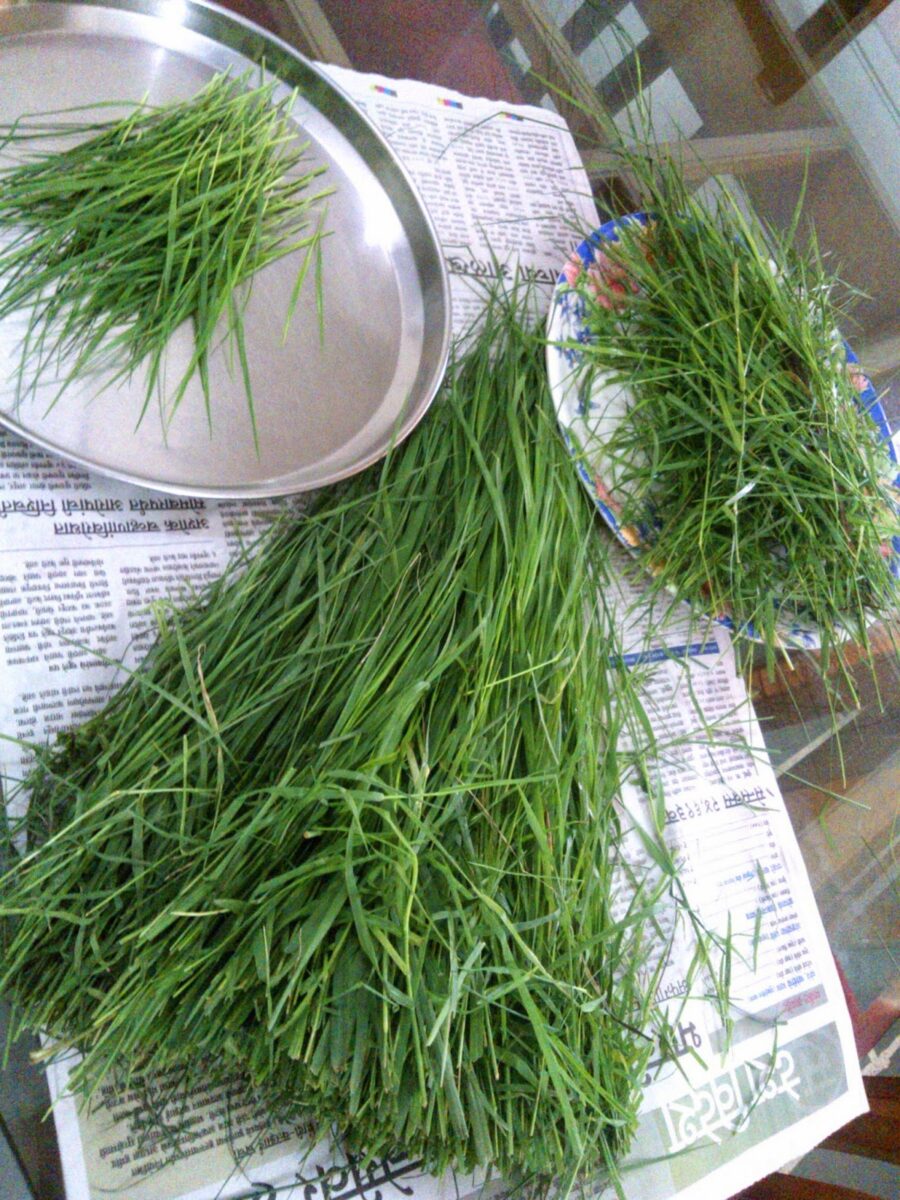 |
| Each Durva is carefully separated into a steel plate |
Each twig has to be carefully examined and cut out at the
correct spot (so only the terminal three shoots are present). At this
stage the twig must be handled very carefully else a blade may break off
which means the Durva cannot be used.
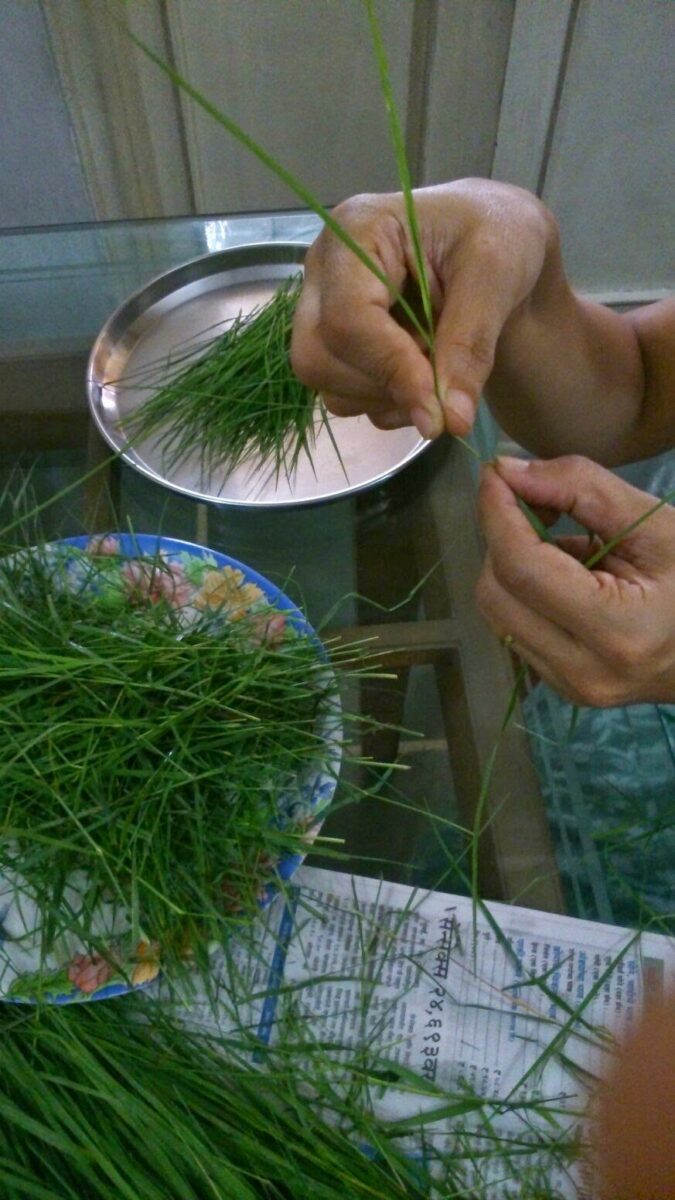 |
| Each twig of grass is assessed. |
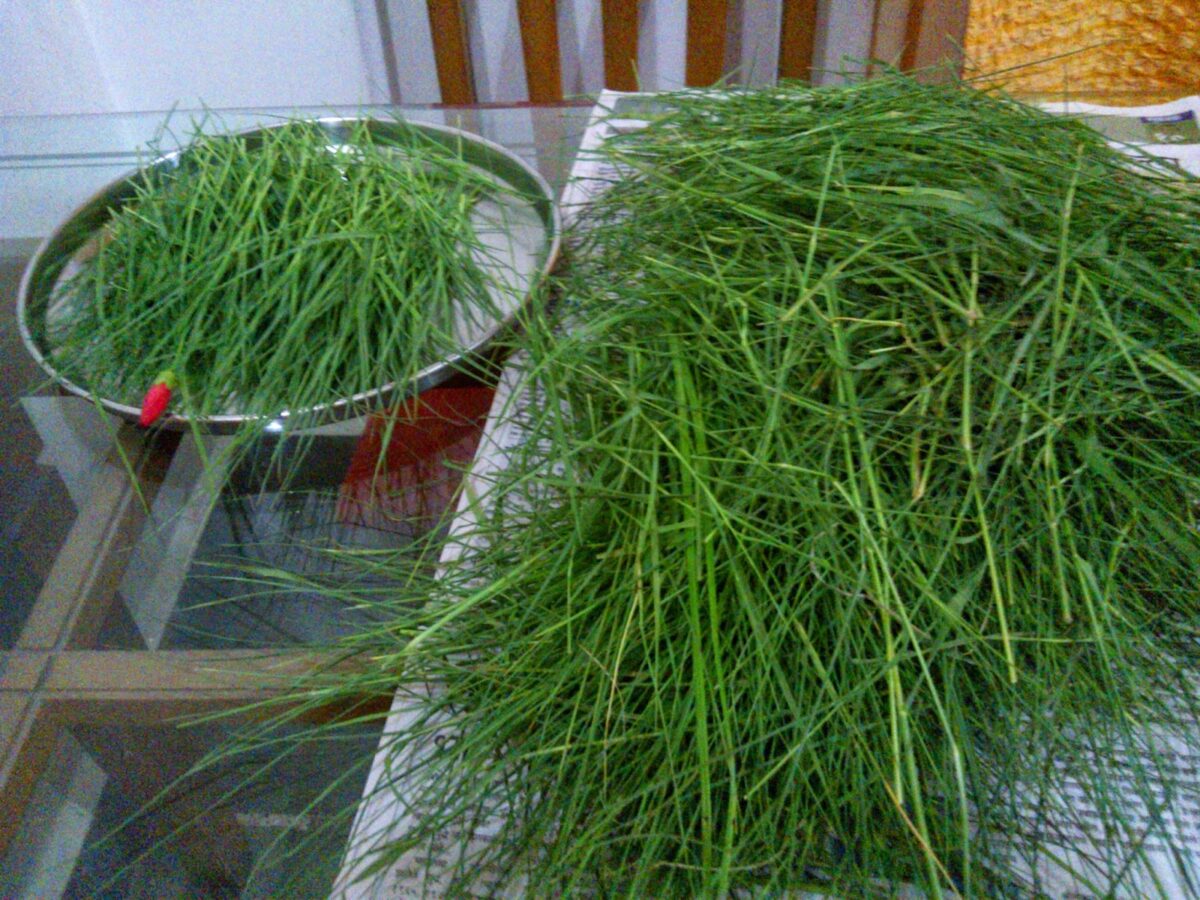 |
| Finally: the small pile of Durva and a big pile of blades of grass |
End result, 16 bunches of 21 Durva each! A time intensive, delicate process but strangely satisfying and enjoyable!
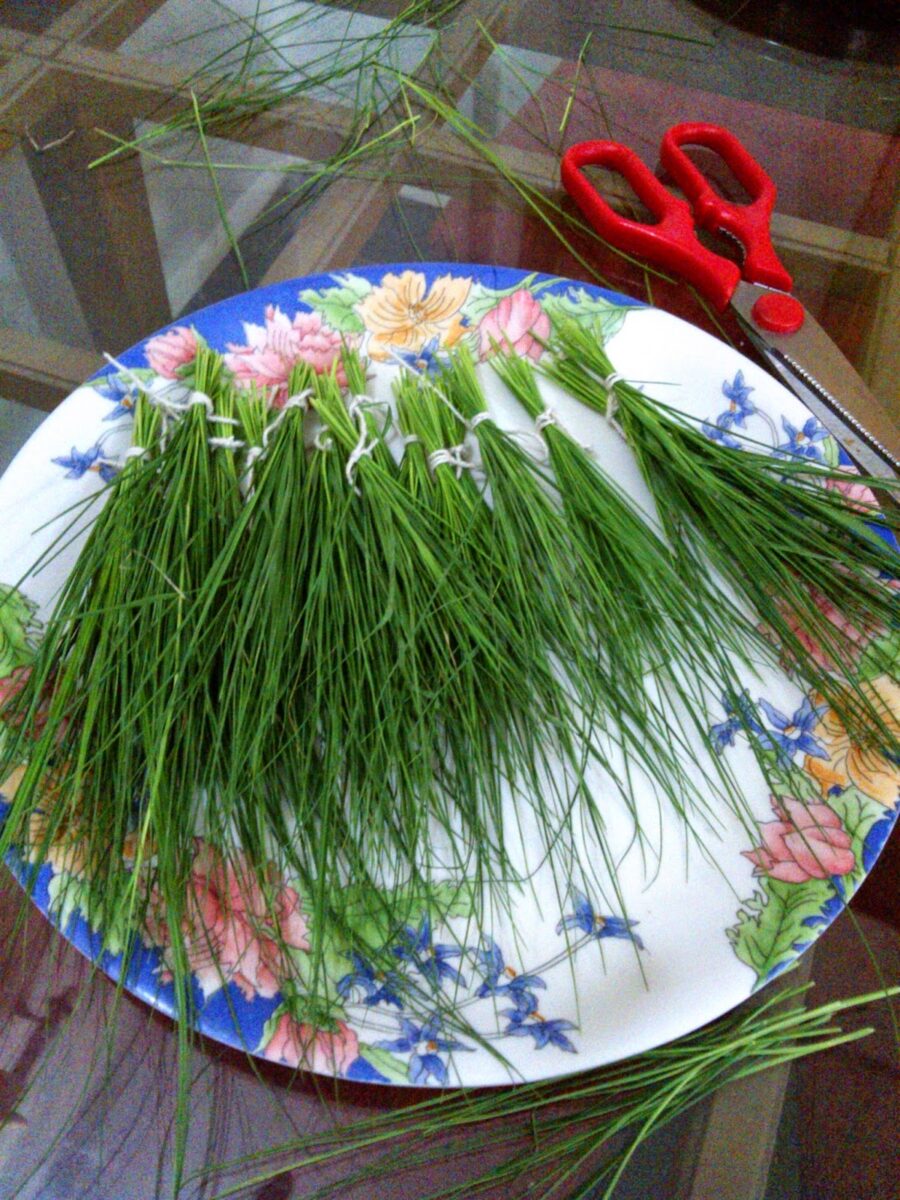 |
| Each bunch has 21 Durva.The string must be firm but not too tight else the delicate stems will break. |
An alternative to this is to get a bunch of pure silver Durva that are available at most jewelers in Pune.
Have a happy, noise-free, eco-friendly Ganesh Ustav!
Here is a link to an article by Devdutt Pattanaik in Times of India about the legends associated with Durva.
Green Glory (Wordless Wednesdays)
Down but not out!
Here is an image captured quite a while ago.
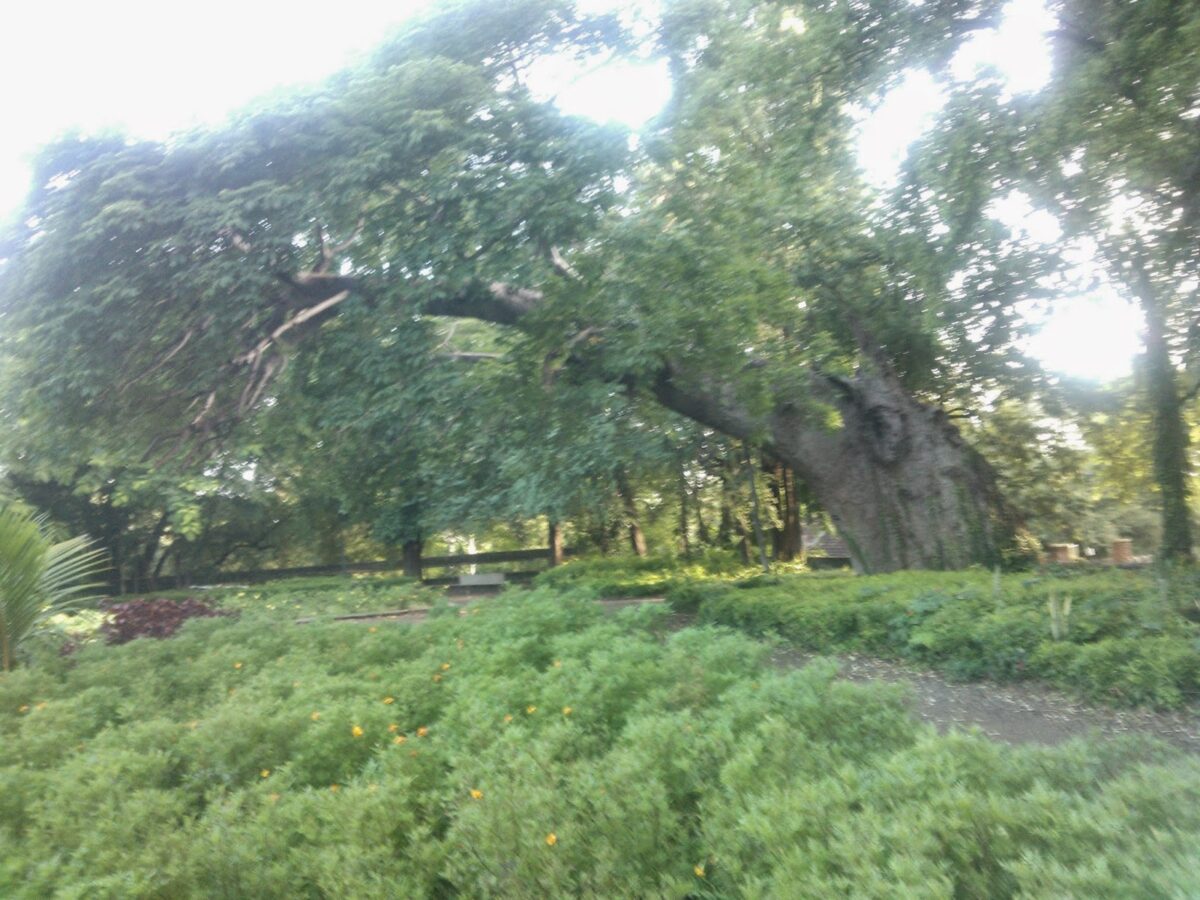
As you can see the tree has bent down considerably as it is weakened on one side due to the infestation. However incessant heavy rain in the monsoon of 2014 caused it to bend down and collapse completely. Here is picture of a newspaper report about the same.
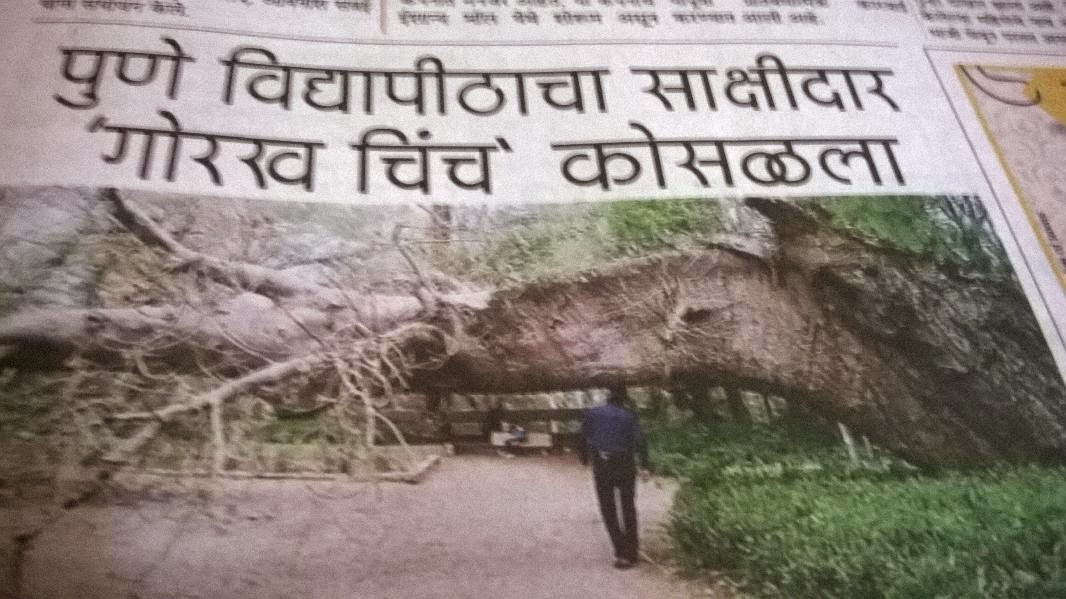 |
| Report in a Pune daily about the fallen tree |
I was quite saddened but really there is not much one can do at an individual level. (Does that sound like an excuse?) Anyway… I happened to visit the University recently and to my utter joy, the tree is still alive. I saw healthy shoots and sprouts at many branches though the tree is horizontal.
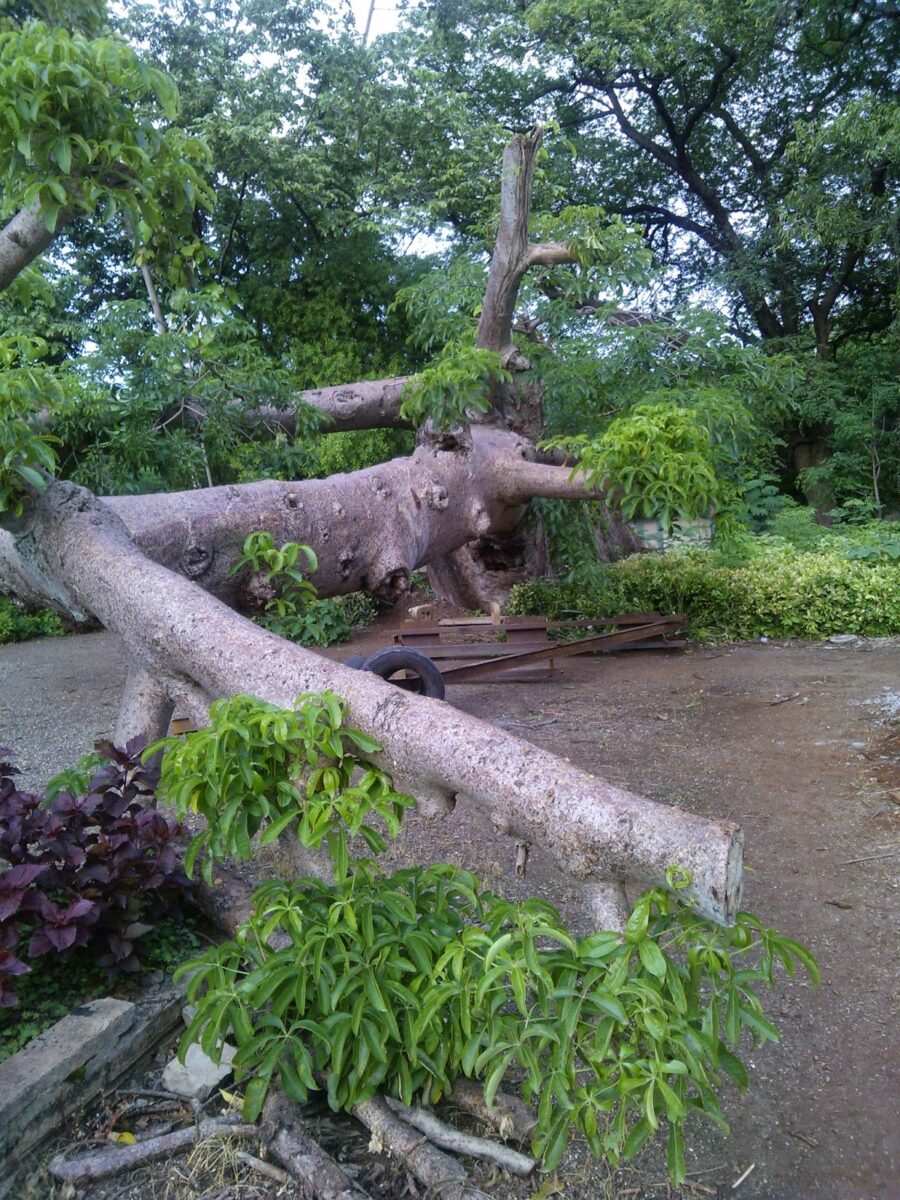 |
| The Boabab has fresh new shoots! |
There is always hope!
Cheers!
